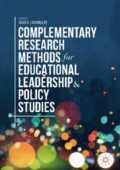Abstract
A critical issue facing educational leaders and policymakers is how to invest scarce resources to improve student learning and educational experiences. To do so, they need information on policy and program costs as well as strategies to understand the relative cost effectiveness of different options. In this chapter, readers are introduced to complementary methods for estimating educational policy and program costs. In addition to describing cost analysis and how it can be used in education, the chapter provides examples and tools that can be used to guide readers’ own investigations.
Access this chapter
Tax calculation will be finalised at checkout
Purchases are for personal use only
References
Belfield, C. R. (2015). Cost-benefit analysis and cost-effectiveness analysis. In H. Ladd & M. Goertz (Eds.), Handbook of research in education finance and policy (2nd ed., pp. 141–156). New York: Routledge.
Bowden, A. B., & Belfield, C. (2015). Evaluating the Talent Search TRIO program: A benefit-cost analysis and cost-effectiveness analysis. Journal of Benefit-Cost Analysis, 6(03), 572–602. https://doi.org/10.1017/bca.2015.48.
Chambers, J. G. (1999). Measuring resources in education: From Accounting to the resource cost model approach. Retrieved from Washington, DC: https://nces.ed.gov/pubs99/199916.pdf
Clive Belfield & A. Brooks Bowden & Henry M. Levin, (2018). Cost estimation in education: The ingredients method. Chapters, in: Teaching Benefit-Cost Analysis, chapter 16, pages 200–207 Edward Elgar Publishing.
Friedman, L. S. (2002). The microeconomics of public policy analysis. Princeton: Princeton University Press.
Harris, D. N. (2009). Toward policy-relevant benchmarks for interpreting effect sizes: Combining effects with costs. Educational Evaluation and Policy Analysis, 31(1), 3–29. https://doi.org/10.3102/0162373708327524.
Hartman, W. T., Bolton, D., & Monk, D. (2001). A synthesis of two approaches to school-level financial data: The accounting and resource cost model approaches. Washington, DC: U.S. Department of Education, National Center for Education Statistics. Retrieved from http://nces.ed.gov/pubs2001/2001378_2.pdf
Hollands, F., Bowden, A. B., Belfield, C. R., Levin, H., Cheng, H., Shand, R., et al. (2014). Cost-effectiveness in practice: Interventions to improve high school completion. Educational Evaluation and Policy Analysis, 36(3), 307–326.
Honig, M. (2006). New directions in policy implementation: Confronting complexity. Albany: SUNY Press.
Ingle, W. K., & Cramer, T. (2013). Not just accountability: A cost-effectiveness analysis of third-grade reading diagnostic tools. In B. G. Barnett, A. R. Shoho, & A. Bowers (Eds.), School and district leadership in an era of accountability (pp. 143–172). Charlotte: Information Age Publishing Inc.
Kolbe, T., & Feldman, R. (2016). Evaluation of the AVID/TOPS program’s resources & costs. Retrieved from University of Wisconsin-Madison, School of Education, New Hope Lab website: http://wihopelab.com/publications/AVID-TOPS-Cost-Resource-Analysis.pdf
Kolbe, T., & O’Reilly, F. (2016). Expanded learning time in public schools: A cost effectiveness analysis of Massachusetts’ Expanded Learning Time Initiative. Leadership & Policy in Schools. https://doi.org/10.1080/15700763.2016.1232832.
Levin, H., & Belfield, C. R. (2013). Guiding the development and use of cost-effectiveness analysis in education Retrieved from Center for Benefit-Cost Studies: http://cbcse.org/wordpress/wp-content/uploads/2014/11/Guidance_on_cost_effectiveness_analysis.pdf
Levin, H., & Belfield, C. R. (2015). Guiding the development and use of cost-effectiveness analysis in education. Journal of Research on Educational Effectiveness, 8(3), 400–418.
Levin, H., & McEwan, P. (2001). Cost-effectiveness analysis: Methods and applications (2nd ed.). Thousand Oaks: Sage Publications.
Levin, H., & McEwan, P. (2002). Cost-effectiveness and educational policy. In H. Levin & P. McEwan (Eds.), Cost-effectiveness and educational policy (pp. 1–17). Larchmont: Eye on Education.
O’Reilly, F., & Kolbe, T. (2011). Where does the money go? Expenditures for the Massachusetts Expanded Learning Time (MA ELT) Initiative. Retrieved from https://www.doe.mass.edu/research/reports/2011/12ELT-Expenditures.pdf
Rice, J. (1997). Cost analysis in education: Paradox and possibility. Educational Evaluation and Policy Analysis, 19(4), 309–317.
Rice, J. (2001). The cost of working together: A framework for estimating costs of comprehensive support systems for children. Administration & Society, 33(4), 455–479.
Rice, J. (2002). Cost analysis in education policy research: A comparative analysis across fields of public policy. In H. Levin & P. McEwan (Eds.), Cost-effectiveness and educational policy (pp. 21–35). Larchmont: Eye on Education.
Rice, J., & Hall, L. J. (2008). National Board certification for teachers: What does it cost and how does it compare? Education Finance and Policy, 3(3), 339–373. https://doi.org/10.1162/edfp.2008.3.3.339.
Author information
Authors and Affiliations
Corresponding author
Editor information
Editors and Affiliations
Rights and permissions
Copyright information
© 2018 The Author(s)
About this chapter
Cite this chapter
Kolbe, T., Feldman, R.C. (2018). Evaluating Education Policy & Program Costs. In: Lochmiller, C. (eds) Complementary Research Methods for Educational Leadership and Policy Studies. Palgrave Macmillan, Cham. https://doi.org/10.1007/978-3-319-93539-3_14
Download citation
DOI: https://doi.org/10.1007/978-3-319-93539-3_14
Published:
Publisher Name: Palgrave Macmillan, Cham
Print ISBN: 978-3-319-93538-6
Online ISBN: 978-3-319-93539-3
eBook Packages: EducationEducation (R0)

